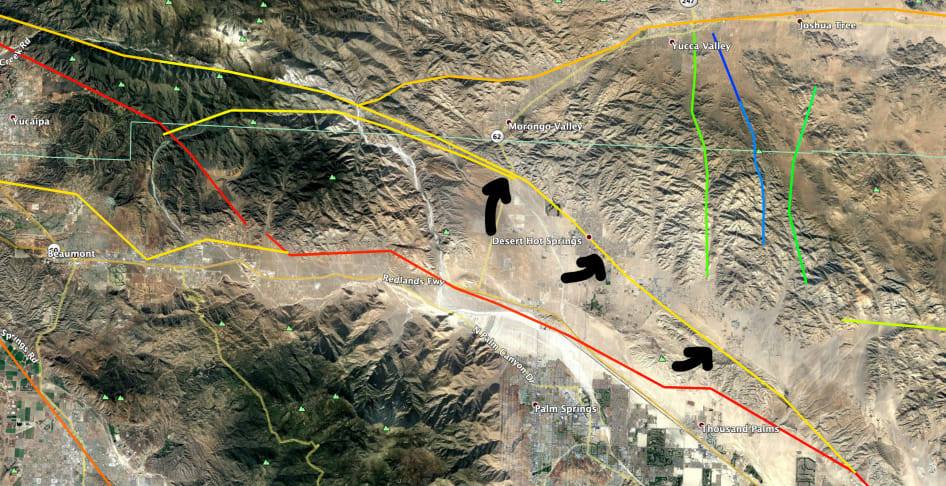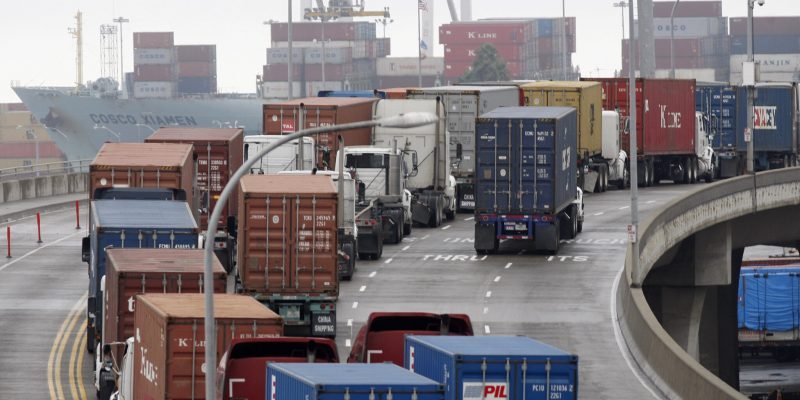A new study published March 24 in the journal Science Advances shows that an overlooked strand of the southern San Andreas Fault is more likely to rupture than any other secondary faults in the region.
Called the Mission Creek strand, the segment spans the cities of Indio, Desert Hot Springs and San Bernardino. It has gone mostly unnoticed because it is thought to be one of the least active sections of the southern San Andreas Fault. But the new study indicates that the strand is actually the fastest moving fault in the region.

Part Of The San Andreas Fault Is Moving Way Faster Than We Previously Thought
“This particular strand of the San Andreas failure has been interpreted to be not very active,” said Kimberly Blisniuk, an associate professor of geology at San Jose State University and the lead researcher of the study.
“It’s actually very active and is the fastest slipping fault for the San Andreas in Southern California. Therefore it has the highest likelihood of a large magnitude earthquake to occur on it in the future.”
The bulk of San Andreas Fault’s strain is concentrated in Mission Creek
The San Andreas Fault is an 800-mile strike-slip fault in which the Northern Pacific plate slides laterally past the North American plate.
Seismic activity along the famed fault is associated with occasional large earthquakes, such as the disastrous San Francisco quake in 1906 and the deadly 1994 rumbler centered in the Los Angeles suburb, which occurred along one of San Andreas’ larger secondary faults.
All eyes are currently on the southern San Andreas Fault because this region hasn’t ruptured in nearly 300 years. Recent data also shows that it has already accumulated enough strain.
However, it has been unclear which of the region’s multiple segments carries the bulk of this strain and therefore has the highest risk of a high-magnitude earthquake.
To that end, Blisniuk and her colleagues calculated the slip rates of the Banning and Mission Creek strands. Past estimates showed that the latter is less likely to rupture than the linkage comprising the Banning and Garnet Hill segments and the San Gorgonio Pass fault zone.
The researchers went to Pushawalla Canyon in Indio to gather records of fault motion that had been preserved over time in nearby landforms. They found evidence of geologically recent slips from the faults at the area, including streams carved out from rocks and gullies that date back to the Pleistocene Epoch.
Using these slips as data points, the researchers determined that the Banning strand accounts for only 2.5 millimeters per year (mmPY) of the San Andreas Fault’s annual slip rate of 24.1 mmPY.
Meanwhile, the Mission Creek strand accounts for 21.5 mmPY, which is considerably higher than a previous estimate of 14 mmPY.
Intense earthquakes may strike along Mission Creek strand
Sally McGill, a geology professor at California State University, San Bernardino who was not part of the study, said about the findings:
“Their study is in a region where the San Andreas Fault is quite complex. This is a substantial step in improving our understanding of how the southern San Andreas Fault works.”
Indeed, the Mission Creek strand receives less attention than the faults around Banning, Garnet Hill and San Gorgonio Pass, but knowing that the strand has a higher risk of major earthquakes can change that.
“Higher slip rates on faults mean more risk,” said Morgan Page, a researcher at the U.S. Geological Survey who was not part of the study.
“It means stress is accumulating faster on that fault and you would need basically either more earthquakes or larger earthquakes over centuries to relieve that stress.”
According to CoreLogic, Inc., a California-based financial services company, a magnitude 8.0 earthquake along the southern San Andreas Fault can damage up to 3.5 million homes and result in reconstruction costs of more than $289 billion.
Source and reference: AFinalWarning.com; StrangeSounds.org
Related posts:
Views: 0
 RSS Feed
RSS Feed

















 March 30th, 2021
March 30th, 2021  Awake Goy
Awake Goy 


 Posted in
Posted in  Tags:
Tags: 
















